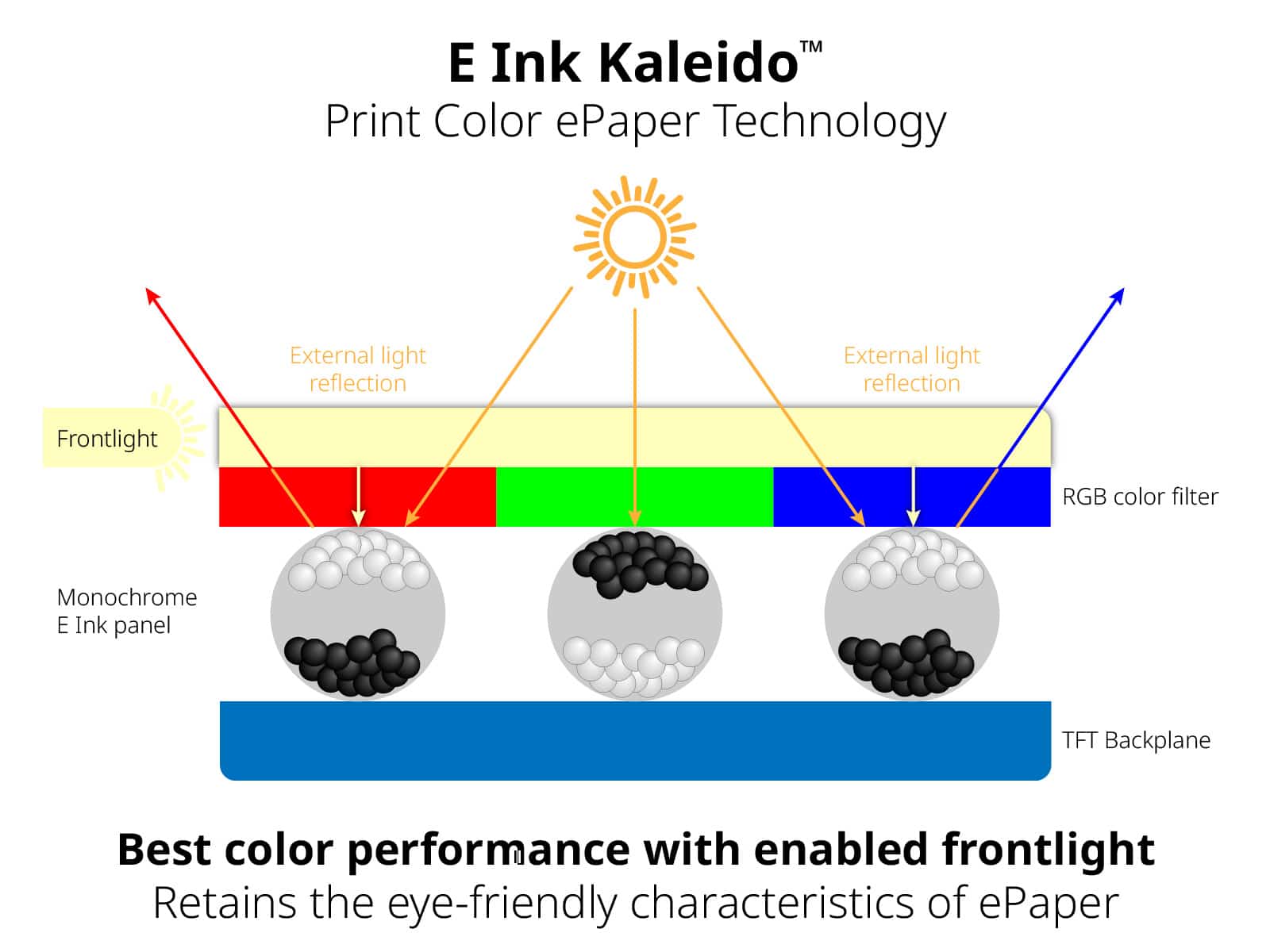DES Display Electronic Paper Cofferdam, or Slurry is a brand new technology that has its first commercial product, the Reinkstone R1. This is basically unproven technology for the digital note taking sector. Whereas E INK has been the de facto standard when it comes to e-paper on basically every single e-reader made in the past 10 years, E INK was basically untouchable. Sure, there were competitors that rose and fell, such as Mirasol, Liquavista and Clearink. Will DES be any different, the short answer is YES!
How does DES compare against the latest generation E INK Kaleido Plus, or Kaleido 2 e-paper? Today, we are going to take a comprehensive look at the fundamental differences between both of this screens and give you a sense on what they bring to the table.
E INK Kaleido 2 is displays color, basically by utilizing a color filter array. Kaleido e-paper can produce color for each pixel that is displayed on the screen. This includes red, green, blue, black or white. Colors can be combined to give you different colors or shades. The way it works is if you want light blue, blue will be toned down and white will be brighter. If you want orange, then yellow and red would be blended. It will ultimately display over 4,096 different color combinations at 100 PPI, no matter how big the screen is. The Onyx Boox Nova 3 Color for example has a color resolution of 624×468, and can display black and white content at 1872×1404 with 300 PPI. One of the drawbacks of his CFA is that color cannot be turned off and on larger screens, the color gamut gets deluded, making everything everything a bit washed out. DES on the Reinkstone R1 has a 10.1 inch screen and a resolution of 1680×2232 with 280 PPI for black and white content and 140 PPI for color. The added color gamut is evident in the note taking app, R1 has 30 different colors to choose from, whereas Onyx has 10. One of the big advantages DES is that the color filter array can be completely turned off, giving you really high resolution black and content content at a higher PPI.
The DES display module adopts a new display structure which is completely different from the current micro-cup and micro-capsule structure. The structure forms a layer of cofferdam structure on the surface of the TFT by forming a cofferdam around the periphery of a single pixel electrode, and the bank covers the source and gate lines on the TFT. The patterned structure is characterized in that each pixel electrode is surrounded by a cofferdam, the microstructure is not visible on the front side, and the number of layers is reduced, thereby obtaining the higher definition and resolution display effect. In order to distinguish it from the traditional micro-cup and micro-capsule technology. Basically this tech uses 3 stages, ITO Glass, Plasma and a TFT. E INK uses TFT, adhesive, the EINK Panel, Color Filter Array, ITO film, adhesive and a protected layer. There is often an additional layer of glass, protecting everything.
How do these two technologies differ when it comes to refreshing? E INK is very well documented with this sort of thing, since their e-paper has been around for a very long time. Basically, E INK does a full page refresh by simply having all of the negatively charged white capsules rise to the top and wipe away all the positively charged black partials. DES basically uses charged pigments in a hydrotropic solvent. One thing we noticed about DES on the R1 is that there is lots of ghosting, even on a full page refresh. There is always residual on the screen. Since, this tech is so new, there really isn’t any case studies on how refreshing is fundamentally handled. From what we have seen in our viewing of the whitepaper on DES some video we shot, picture Slurry as bathtub of Cofferdam pixels, sloshing together in a pool of plasma. There seems to be no way to absolutely bring back everything to a default state, short of emptying the tub and refilling it.
Here are some key facts from our real world viewing of the two technologies. E INK Carta HD plays nice with the Kaleido Plus CFA, but blacks are never true blacks and the color gamut suffers. DES has a wider color gamut and the whites are brighter, although colors tend to bleed into each other, such as on a color wheel. DES gives you better battery life, even running Android 11, due to the way that it handles voltages.
Michael Kozlowski is the editor-in-chief at Good e-Reader and has written about audiobooks and e-readers for the past fifteen years. Newspapers and websites such as the CBC, CNET, Engadget, Huffington Post and the New York Times have picked up his articles. He Lives in Vancouver, British Columbia, Canada.





